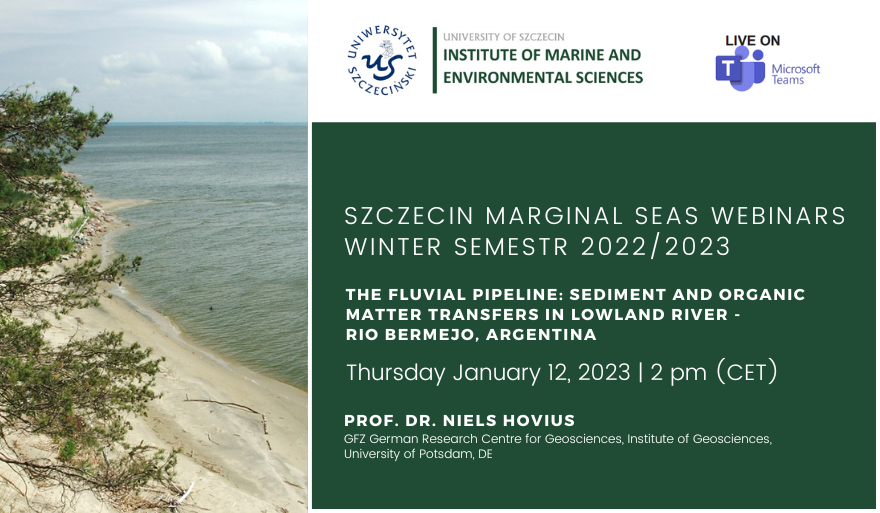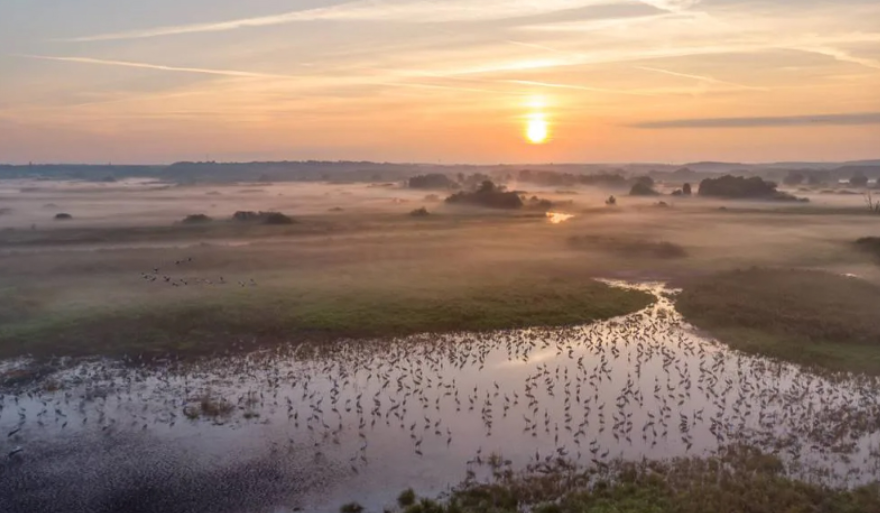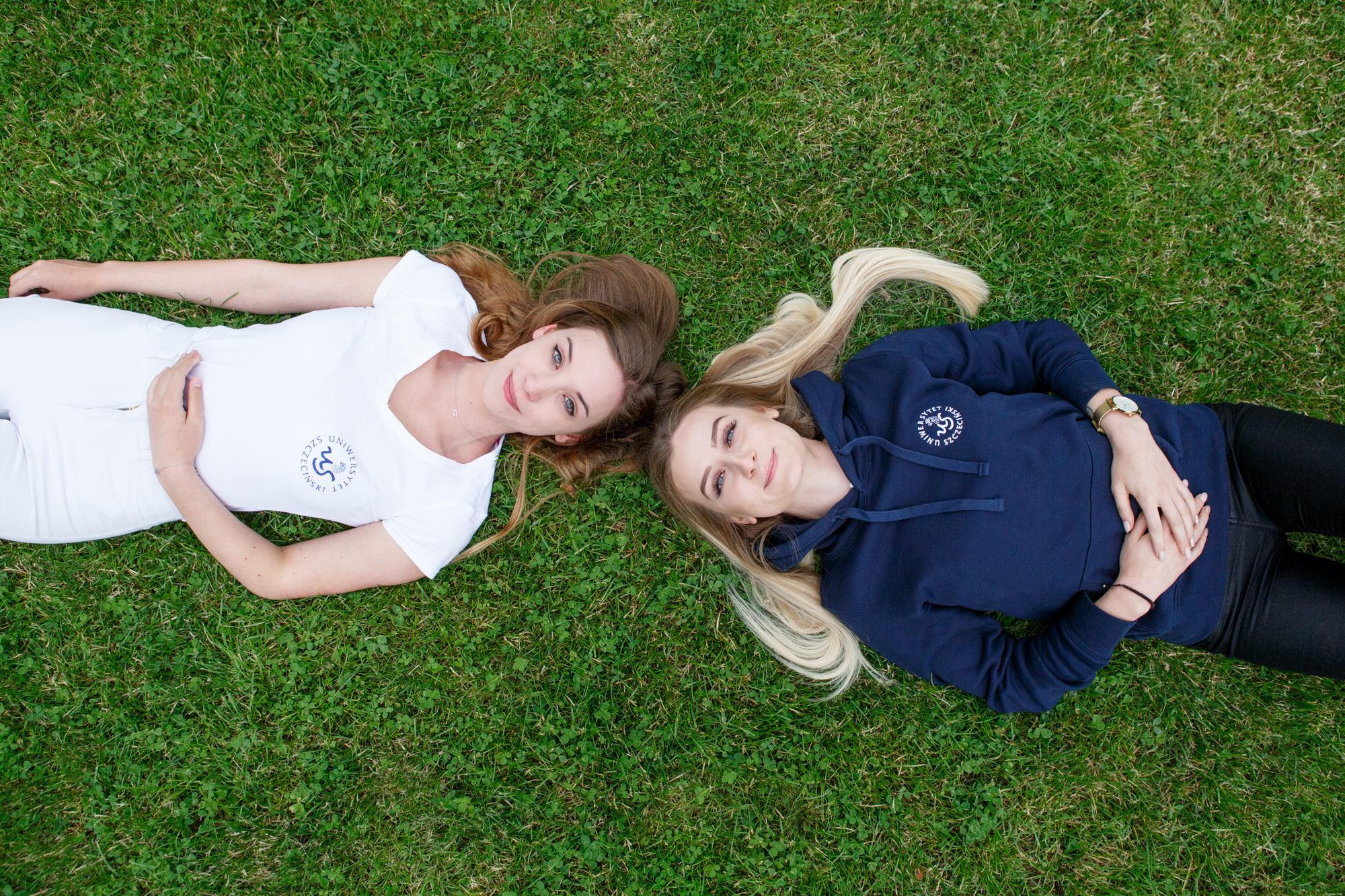
The Institute of Marine and Environmental Sciences invites for a first in the new year Szczecin Marginal Seas Webinar. A meeting will take place on 12 January at 2 pm both on-site and on-line.
Prof. dr Niels Hovius of GFZ German Research Centre for Geosciences and Institute of Geosciences, University of Potsdam (DE) will give a lecture entitled: The fluvial pipeline: sediment and organic matter transfers in a lowland river – Rio Bermejo, Argentina.
12 January 2023, 2 pm, 16, Mickiewicza St., room 111
MS Teams, code: 2sc5rph
Abstract
Rivers are vital links in source to sink systems, feeding quantities of solids and solutes to the coastline. By transferring sediment, organic matter and weathering products into geological sinks, rivers affect the distribution of loads on the lithosphere, and regulate global biogeochemical cycles. While upland rivers function primarily as matter sources, lowland rivers can have significant exchange of load with surrounding floodplains, transient storage and attendant biochemical transformations. As a result, lowland river systems act as filter and transformers of source signals complicating the interpretation of downstream fluxes. Key questions about the functioning of this filter include the frequency of matter exchange between river channel and floodplain, the transit time of river solids, the transformation and fate of matter in transient storage, and the difference between upland input and lowland output fluxes. We have used the special attributes of the Rio Bermejo in northern Argentina to address these questions. The Rio Bermejo drains a section of the eastern Andes to the Rio Paraguay, crossing an 800 km wide foreland. The lowland section of the river flows 1300 km without tributaries, making it one of the longest single channels on Earth. Over its length, the Rio Bermejo has little human interference, and the river system can be considered to have natural behavior. We have sampled the river at various locations during the high flow season of the South American monsoon and during the low flow season. Sediment, organic matter and water samples were analysed for heavy minerals, cosmogenic radio-nuclides, organic matter isotopic composition and molecular make up, and water major element content and stable isotope composition. The seminar will highlight some of the major insights gleaned from this project.










